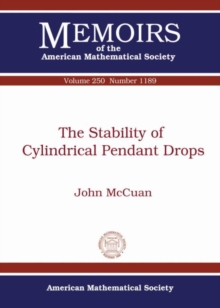
General Relativistic Self-Similar Waves that Induce an Anomalous Acceleration into the Standard Model of Cosmology Paperback / softback
by Joel Smoller, Blake Temple
Part of the Memoirs of the American Mathematical Society series
Paperback / softback
Description
The authors prove that the Einstein equations for a spherically symmetric spacetime in Standard Schwarzschild Coordinates (SSC) close to form a system of three ordinary differential equations for a family of self-similar expansion waves, and the critical ($k=0$) Friedmann universe associated with the pure radiation phase of the Standard Model of Cosmology is embedded as a single point in this family.
Removing a scaling law and imposing regularity at the center, they prove that the family reduces to an implicitly defined one-parameter family of distinct spacetimes determined by the value of a new acceleration parameter $a$, such that $a=1$ corresponds to the Standard Model.
The authors prove that all of the self-similar spacetimes in the family are distinct from the non-critical $k\neq0$ Friedmann spacetimes, thereby characterizing the critical $k=0$ Friedmann universe as the unique spacetime lying at the intersection of these two one-parameter families.
They then present a mathematically rigorous analysis of solutions near the singular point at the center, deriving the expansion of solutions up to fourth order in the fractional distance to the Hubble Length.
Finally, they use these rigorous estimates to calculate the exact leading order quadratic and cubic corrections to the redshift vs luminosity relation for an observer at the center.
Information
-
Out of Stock - We are unable to provide an estimated availability date for this product
- Format:Paperback / softback
- Pages:69 pages
- Publisher:American Mathematical Society
- Publication Date:30/06/2012
- Category:
- ISBN:9780821853580
Other Formats
- PDF from £52.20
Information
-
Out of Stock - We are unable to provide an estimated availability date for this product
- Format:Paperback / softback
- Pages:69 pages
- Publisher:American Mathematical Society
- Publication Date:30/06/2012
- Category:
- ISBN:9780821853580










